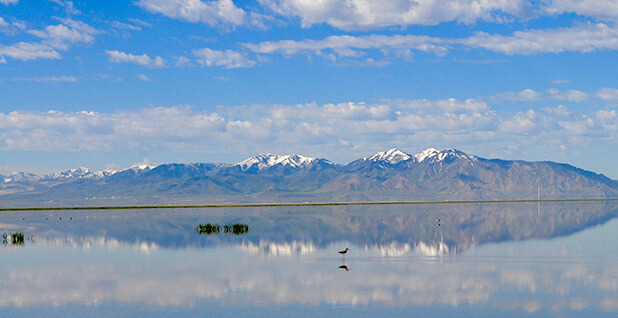Article updated at 5:18 p.m. EDT.
SALT LAKE CITY, Utah — For a long time, the lake that lends its name to this city was taken for granted by most here and treated as a sewer by some of the nation’s biggest polluters.
But the Great Salt Lake can no longer be ignored.
The lake is afflicted with all the problems facing lakes in the American West, including misguided water management schemes, historic drought and climate change.
When pioneers arrived here in the 19th century, the Great Salt Lake was one of the largest salt lakes in the world — a shallow body of water that naturally ranged from 990 to 2,340 square miles.
It’s now near its lowest point. Diversions that have taken 39 percent of the lake’s inflows have caused the lake level to drop 11 feet, and it has lost 48 percent of its volume.
At least 550 square miles of lake bed is now dry, an area five times the size of Owens Lake — the site of Los Angeles’ water grab at the turn of the 20th century, which led to dust bowl conditions there (Greenwire, June 6).
Dust storms occur regularly in the Great Salt Lake region, and research suggests the lake breathes contaminants — inhaling filthy air from cities, adding to it and then exhaling it right back at population centers.
The public health consequences of that pollution will be worse than what has occurred at California’s imperiled salt lakes, experts say. More than two-thirds of Utah’s rapidly growing population — 2 million people — breathes that pollution.
